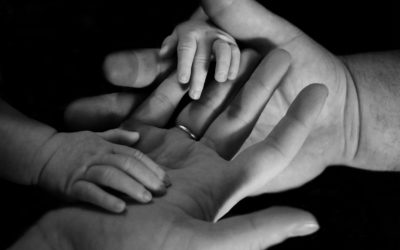The audio was bad on the first half of our live-stream broadcast today, so in case you want to see what I was saying on the first half, I’m posting the written version.
Finding balance in challenging times
This morning, as I did last week, I am aiming to find a balance between recognizing that we’re in a crazy, unpredictable situation and keeping things at least a bit normal.
First, the crazy part. Currently, in Sedgwick County, Kansas, we are under a stay-at-home order until at least April 23. That’s what we’re coping with.
The other day, I posted a meme on the church’s Facebook page that listed six daily quarantine questions. I’m going to go through each of them and talk about my answers to the questions. Feel free to post your answers in comments.
What am I grateful for today?
- I am grateful for Michael and Rosemary who are here helping me and for Dan DeGroot’s equipment that supplements Michael’s. So many people are stepping up to help, it’s a joy.
- I am grateful for grocery delivery. I bought food from Dillons this past week, and a helpful person gathered up my groceries and left them on the porch for me.
- I am grateful for technology and that I have enough experience with it to make it work in new ways.
- I am grateful that God is faithful.
What are you grateful for?
Who am I checking in on or connecting with today?
- Today, I am connecting with you-all. 😊
- Earlier last week, I talked with a friend of mine who lives near the southern Oregon coast. I haven’t talked to her since August, and we chatted for more than an hour.
- Also last week, my son called me from Indiana, just as they were sitting down for dinner. While on the phone with his family, I heard three of my four grandchildren play music. Josiah (10) played an instrument he had made out of plastic tubes. Naomi (14) played a tune on a recorder. Olivia (16) played three notes on her trombone before she was overcome by giggles. 😊
- Yesterday, I Zoomed with three friends – one in Indiana, two in Michigan.
Who are you checking in on or connecting with today?
What expectations of “normal” am I letting go of today?
- Today, live-streaming worship without a congregation in front of me seems like the new normal.
- I think one of the hardest things to let go of is hugs. When someone is having a hard time or when I want to show appreciation, a hug or a pat on the back conveys something that is harder to do at a distance. I let that go with a sense of loss.
What expectations of “normal” are you letting go of today?
How am I getting outside today?
- That’s easy – I walked to the church from my house, and I will walk back.
- Later, I may have a picnic lunch at the table outside the east door here.
- Several times some of the Wines, two households of whom live very close, have texted to invite me to go walking with them in the evening, around the block and onto the university campus. (Oh, I am grateful for that, too.) The other day, we walked over to see the lighting of the steeple on campus, with a backdrop of a lovely sunset.
How are you getting outside today?
How am I moving my body today?
- Well, maybe I’ll go walking with the Wines.
- Also my old Zumba Gold class has been holding virtual sessions. Uptown Funk always makes me want to move. “Don’t believe me, just watch.”
How are you moving your body today?
What beauty am I either creating, cultivating, or inviting in today?
- Last week, I mentioned that I had unpacked angels. I am inviting their beauty in every day.
- A couple of days ago, a Facebook friend of mine asked us to post the last nature picture we took with our cellphones. I checked, and mine was a sunset I took from the church parking lot. As others posted, we enjoyed the beauty we offered each other. Well, one person posted a picture of their trash can, but mostly beauty. 😊
- A few days ago, I found a three-hour YouTube video of ocean waves. I’ve left it up so I can go look at the ocean and listen to the surf any time I need a bit of respite.
- Beauty is comforting. Someone has said beauty is a sign of God’s presence.
So, what beauty are you creating, cultivating, or inviting in today?
Through gratitude, virtual connections, letting go of expectations, getting outside, moving, and experiencing beauty, we can make this time less distressing for ourselves and others.
And remember, you are not alone even if no one is physically present. We’re all in this together. And, in the words of Romans 8, “I’m absolutely convinced that nothing—nothing living or dead, angelic or demonic, today or tomorrow, high or low, thinkable or unthinkable—absolutely nothing can get between us and God’s love…” (Romans 8:37, The Message).
That’s how we deal with the crazy part of our lives.
Who do you say that I am?
Now for something a bit more normal, I have one last message dealing with the question Jesus posed his followers, Who do you say that I am?
For Paul, Jesus Christ is the Son of God, raised from the dead by the power of God. And that power is available to us as grace.
In the Gospel of Mark, Jesus is the Son of God who taught with authority, did amazing things, and drew crowds. And, for Mark, Jesus was not your typical Son of God, because Jesus’s path led him through suffering and death, and even those closest to Jesus didn’t get it.
The Gospel of Matthew aims to show that Jesus is like a new Moses, a continuation of the Jewish tradition, and our example of humility and compassion.
In Luke, “Jesus … is a Spirit-anointed social prophet whose activity is directed especially to the poor and oppressed” (Borg, Reading the Bible Again, p. 202).
In the Gospel of John, Jesus is God incarnate, the Word made flesh, the source of all that is essential for a flourishing life.
For George Fox, the founder of Quakerism, Jesus is the one who can speak to our conditions, the one who “enlightens and gives grace, and faith, and power” (Fox, Journal, 11).
For Elizabeth Johnson in She Who Is, Jesus, like Sophia, is wisdom personified, God made flesh, calling us to listen, to learn, and to live life well.
This week, I’m going to share another feminist-leaning perspective on who Jesus is. This one is from Sallie McFague, an American theologian.
In McFague’s book, Models of God, she moves away from the traditional metaphors of God as Father, Son, and Holy Spirit. Instead, McFague experiments “with the models of God as mother, lover, and friend” (p. xi; cf. p. xiii). For McFague, Jesus is God as lover.
In some ways that notion isn’t all that different from a traditional Christian understanding of Jesus. Here’s what McFague says about that:
If there is one word the Christian tradition has been willing to apply unqualifiedly to God it is ‘love.’ God is love…. God exemplifies love, God is the model of love. We learn what love is by looking to God…. But how is this done? It is done [the Christian tradition tells us] by looking at the story of Jesus of Nazareth, his teachings, death, and resurrection, as the revelation of God’s love to us (p. 125).
According to the Christian tradition, Jesus reveals God’s love to us.
McFague, then, pushes on that tradition to say that Jesus is God as lover. She acknowledges that using the word “lover” to talk about God is not something we’re used to. It seems a bit, I don’t know, creepy? Weird? Let’s see where she goes with it.
As McFague explains what she means by God as lover, she focuses on three aspects: eros, saving, and healing (p. 129).
Eros is one of the Greek words for love, and it has to do with love as desire. About eros, McFague writes,
God as lover is the one who loves the world … totally and passionately, taking pleasure in its variety and richness, finding it attractive and valuable, delighting in its fulfillment. God as lover is the moving power of love in the universe… (p. 130).
Such a God is the one I know experientially – the God who loves the world and takes pleasure in its variety and growth.
In our world, today, McFague contends, we need a perspective that comes from knowing God in this way. If we understand God as loving the world, we see things differently:
Life is not worthless…. It is valuable and precious, and we need to feel that value in the marrow of our bones if we are to have the will to work with the divine lover toward including all the beloved in the circle of valuing love (p. 133).
I need to know my own value, a value I find in God’s eyes, in order for me to love you as valuable and precious. I am valuable and precious. You are valuable and precious.
That’s what we find in the eros aspect of God as lover.
What does McFague say about the saving aspect of God as lover? “Salvation in the model of God as lover,” she writes, “is holistic, inclusive, and positive…” (pp. 144-5).
God as lover values the world and all its creatures…. The work of salvation is first of all the illumination that all of us are loved by God with the greatest love we can imagine – the love that loves us not in spite of who we are but because of who we are. … It assumes that the first work toward making the body whole again is the revelation we could not imagine on our own: we are loved, loved deeply and passionately, by the power whose love pulses through the universe.
Our response to such love, McFague says, is twofold:
… we are aware, through the illumination of God’s great love for us, of a [1] redirection of our love away from self and toward others in the beloved world, and [2] we feel energized to work to overcome alienation, to heal wounds, to include the outcasts (p. 144).
That’s what working out our salvation looks like: as we receive God’s love, we give it away.
What does McFague say about the healing aspect of God as lover?
As healer of the divisions in the body and liberator of those oppressed by others, God as lover of the world works actively to bring well-being to the beloved. It is no more coincidence that the active phase of Jesus’ ministry is well expressed in … healing to the sick and liberation to the oppressed …, for to be whole and free is what lovers want for their beloved, and one must work actively and relentlessly to help bring such conditions about (pp. 148-9).
God is always at work for our well-being.
McFague mentions several examples of people who have worked for wholeness and freedom in the world. Among those examples is a Quaker.
… John Woolman, the eighteenth-century Quaker abolitionist, … not only spent his life fighting slavery as an itinerant crusader walking hundreds of miles (to protest the enslavement of the post boys who cared for the carriage horses) and wearing undyed clothing (to protest the slave-manned dye ships from the West Indies) but who also reasoned endlessly with the slaveholders whom he included in his ministry (pp. 150-151).
John Woolman worked for the well-being of his world.
McFague continues:
The healers and liberators of the world are many and diverse: all those whose work whether paid or unpaid, brings together those who belong together and frees the oppressed are participating in salvation. The peacemakers on a city block or at an international negotiating table; the reformers of economic injustice, racial conflict, or sexual discrimination, whether at the personal, familial, or public level; the healers of torn bodies and broken spirits, whether of those at hand or treated by institutions we support; the ecological planners, whether of a backyard garden, a model town, or the world community – all these and many more participate in the work of salvation (p. 153).
That’s what healing looks like.
Jesus is God as lover, the one who loves the world totally and passionately and takes pleasure in its variety. In working out our salvation, we receive that love and give it away. God as lover of the world works actively to bring well-being to the beloved.
For God so loved the world that he gave his only begotten Son, to bring salvation and healing.



